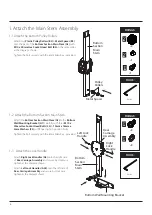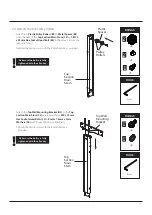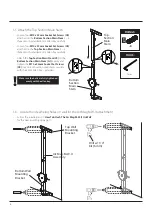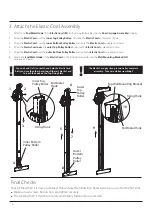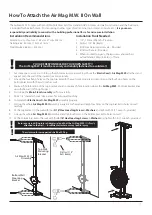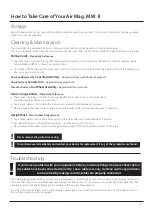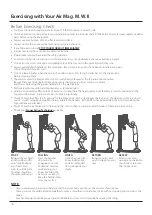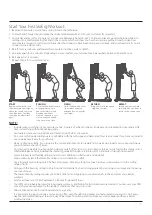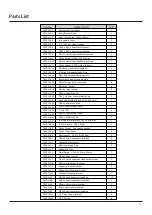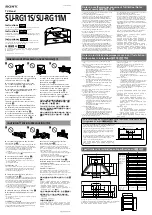
Start Your First SkiErg Workout:
1. Begin with a minute or two of easy skiing to learn the technique.
2. Follow the technique steps and keep the stroke rate between 25 and 30 spm.( or slower if you prefer).
3. Ski steadily and easily for 3 minutes at a stroke rate between 30 and 35 spm. Continue to practice good technique while also
settling into a comfortable rhythm. Watch the console, which will show you how hard you are pulling on each stroke, how
many meters (or watts or calories) you have skied, how long you have been skiing, your cadence, and your heart rate if you are
connected via a HR monitor.
4. Rest for several minutes and review the console instructions, walk or stretch.
5. Ski easily again for 3-5 minutes. Depending on your comfort, your cadence may be anywhere between 30 and 45 spm.
6. Rest again for 1-2 minutes.
7. Repeat Step 5 for two or three times.
NOTE:
•
Include some stretching in your exercise routine. A variety of aches and pains can be eased or prevented by investing a little
time in stretching without bouncing gently.
•
Gradually increase your skiing time and intensity over the first two weeks.
•
Do not ski at full power until you are comfortable with the technique and have skied for at least a week. If you have not skied in
over a week, take it easy for your first ski.
•
Like any physical activity, if you increase the volume and intensity too rapidly, fail to warm up properly, or use poor technique,
you will increase the risk of injury.
•
Don’t expect to be able to jump right on where you left off and don’t try to do intense interval work. Start with a steady ski at a
comfortable pace and try building the intensity gradually through serval interval of 3-5 minutes in length from next ski.
•
Lower intensity levels feel like skiing in faster snow condition, on flat terrain and downhill.
•
Higher intensity levels feel more like skiing in slow condition or uphill.
•
Use a intensity level setting on 8. The best, all-purpose intensity setting for a great cardiovascular workout is in the setting
range of 6-10.
•
Skiing with the intensity setting too high can be detrimental to your training program by reducing your output and increasing
your risk of injury.
•
The lower intensity setting requires you to be a little faster in applying your power which, in the end, gives you a better
workout.
•
Aim for a stroke rate / SPM of between 30-40 spm for general fitness.
•
Your SPM can probably be lower for long steady workouts, and higher for short intense work intervals. You may vary your SPM
to match your poling tempo for the range of conditions that occur on snow
•
Allow a little extra time for warm-up and start very easily.
•
It is important to give your body a rest every so often, even though skiing makes you feel great and you want to do it every
day. We recommend taking at least one day off per week from skiing and it will make you more eager and have a better
workout next day.
START
Begin with your hands and
shoulder-width apart slightly
above your head. Your arms
should be bent. Your feet
should be shoulder-width
apart.
PULLING
Drive the handles downward
by engaging your core
abdominal muscles and
bending your knees.
Maintain the bend in your
arms to keep the handles
fairly close to your face.
FINISH
Finish the drive with knees
slightly bent, and arms
extended down alongside
your thighs.
RETURN
Bring your arms back up and
straighten your legs.
REPEAT
Extend your arms upward
and straighten your body to
return to the start position.
17




